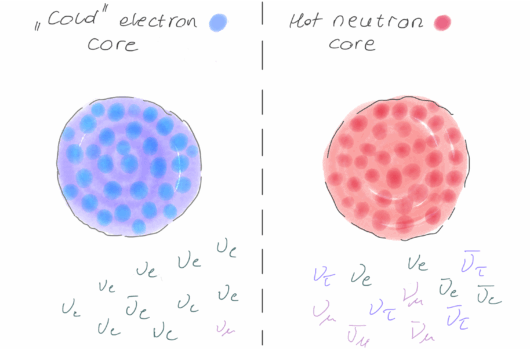Constraints on pseudo-Dirac neutrinos using high-energy neutrinos from NGC 1068
Constraints on pseudo-Dirac neutrinos using high-energy neutrinos from NGC 1068
View
Abstract
Neutrinos can be pseudo-Dirac in Nature – they can be Majorana fermions while behaving effectively as Dirac fermions. Such scenarios predict active-sterile neutrino oscillations driven by a tiny mass-squared difference ![]() , which is an outcome of soft lepton number violation. Oscillations due to tiny
, which is an outcome of soft lepton number violation. Oscillations due to tiny ![]() can only take place over astrophysical baselines and hence are not accessible in terrestrial neutrino oscillation experiments. This implies that high-energy neutrinos coming from large distances can be naturally used to test this scenario. We use the recent observation of high-energy neutrinos from the active galactic nuclei NGC 1068 by the IceCube collaboration to rule out
can only take place over astrophysical baselines and hence are not accessible in terrestrial neutrino oscillation experiments. This implies that high-energy neutrinos coming from large distances can be naturally used to test this scenario. We use the recent observation of high-energy neutrinos from the active galactic nuclei NGC 1068 by the IceCube collaboration to rule out ![]() in the region
in the region ![]() at more than
at more than ![]() confidence level – one of the strongest limits to date on the values of
confidence level – one of the strongest limits to date on the values of ![]() . We also discuss possible uncertainties which can reduce the sensitivity of these results.
. We also discuss possible uncertainties which can reduce the sensitivity of these results.




